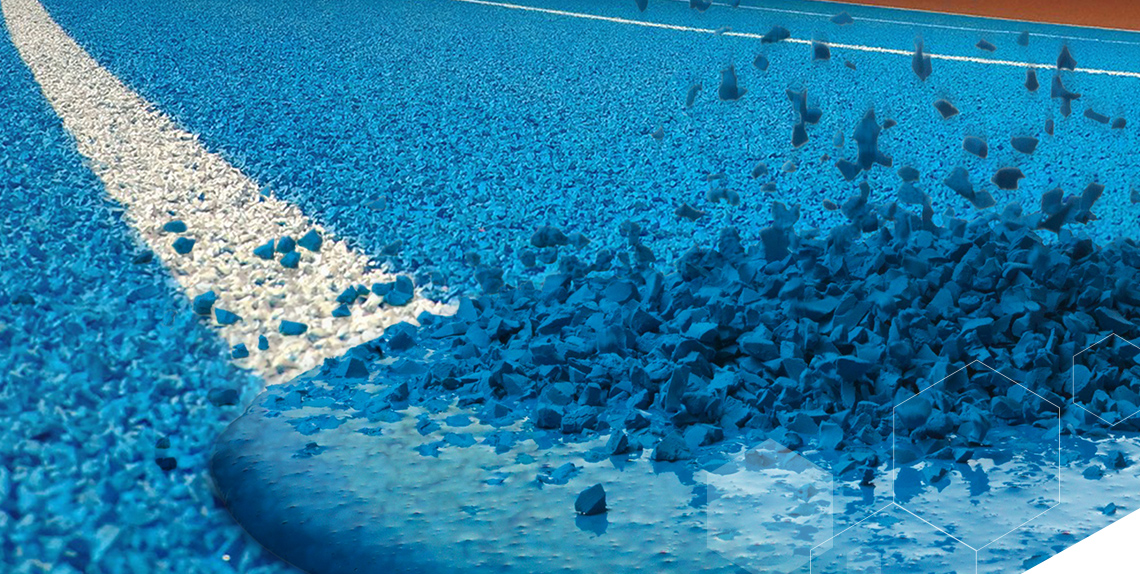September 2022
Binders for EPDM granules – polyurethane for every colour of flooring.

In their original form, EPDM granules are an aggregate of many small, loose pieces. Only by binding them with a binder can they be used as a fully functional sports, leisure and fall protection surface. This is achieved using polyurethane binders, a kind of adhesive that bonds all the pieces together.
Polyurethanes (PUR) are created by reacting isocyanates and polyols, long-chain molecules with alcohol groups at the end of the chains (“poly” = many, “ol” = chemical abbreviation for alcohols). The resulting liquid products are known as “prepolymers”.

Depending on the structural composition of the isocyanate and polyols, this reaction produces highly elastic foams, textile fibres, hard and brittle materials – or the polyurethane binders that we use. It’s important that the polyurethane binders remain liquid before and during installation, and only afterwards slowly transition to a firm, hardened state. To achieve this, a small part of the isocyanate groups are left at the end of the polymer chains during the production of the polyurethane binders.
How are polyurethane binders and EPDM granules installed?
In order to be installed as a sports/fall protection surface, the EPDM granules are mixed with the liquid polyurethane binder. This creates a thin film of binder (coating) around every EPDM granule. The properties of polyurethane that ensure hardening of the surface are used to create a non-slip surface. The remaining isocyanate groups at the end of the long polymer chains react with water molecules in the air. Once all the isocyanate groups in the polyurethane binders have reacted with the humidity in the air, the binder is no longer liquid and bonds the EPDM granules together.
Which polyurethane binders does Melos GmbH use?
We use two main types of polyurethane binder, depending on the customer’s requirements.
Aromatic polyurethane binders are the less expensive standard option among our binders. These contain what are known as “double” or “unsaturated” bonds. Reactions may occur at these points, e.g. with UV light. When aromatic binders are combined with EPDM granules, the binder may become discoloured by UV light, causing purely cosmetic distortion of the surface colour. Note: the discoloration does not affect the granules themselves! What’s more, after some time in use, the surface will return to its original colour. Until then, the surface may appear dappled or off-colour from time to time (depending on its daily exposure to UV light). For many granule colours, this effect is irrelevant or barely noticeable. However, for some colours, the effect is more noticeable (see overview below).
To prevent discoloration caused by UV light, at least of critical colours, we also offer lightfast polyurethane binders. As the name suggests, these do not react to UV light the way aromatic binders do. This is achieved either by removing the unsaturated components (using other isocyanates and polyols) or by using UV stabilisers, which suppress the unwanted UV reaction of the binders. Lightfast binders are not affected by discoloration after hardening. However, the lightfast binders may be coloured in their liquid form. This is often reported as a defect – but isn’t one.
We would be happy to help you select the right binder, and have created an overview where we recommend a corresponding binder for each granule colour.